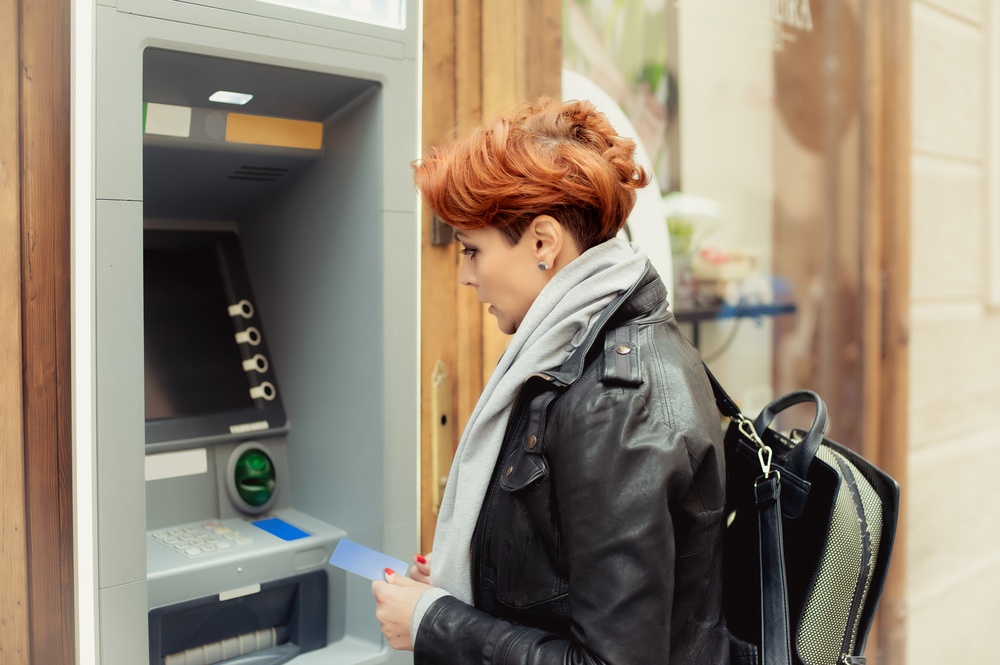
guruXOX / Shutterstock.com
If you’re looking for the perfect student checking account that won’t charge you a monthly fee, the good news is that you have options. The bad news is that you have a lot of options—maybe too many. Almost all of the biggest banks and some regional banks and credit unions have affordable banking options for students.
I’ve decided to highlight 10 of my favorites. You’ll want to narrow them down further by considering your needs. (Which features are must-haves and which features can you live without?) Plus, you’ll want to consider their locations. (Are there ATMs and branches near you?) So, take the following information as your starting point as you search for no-fee student checking accounts. If a certain account catches your eye, make an appointment at a branch near you or call a customer service representative. (It’s worth remembering that not all offers are available in every location.)
Ally Interest Checking
Independent, tech-savvy students might love doing all of their banking online. That’s where the Ally Interest Checking Account comes in. While not specifically designed for students, it waives monthly maintenance fees for everyone and prides itself on its high APY (Google it). ATM use isn’t a problem either. Ally customers can use the Allpoint ATM network for free, deposit checks remotely, and send money through a feature called Popmoney, which requires nothing more than the recipient’s email address, phone number, or bank account number.
- Opening Deposit: No minimum
- Out-of-Network Domestic ATM Fees: $3.00 per transaction; Ally will reimburse up to $10.00 per month
- Out-of-Network International ATM Fees: Up to 1% of the transaction amount
Bank of America
Bank of America Core Checking Accounts waive monthly fees for students under 24 years old who are enrolled in high school, college, university, or technical school. These checking accounts come with typical perks: online, mobile, and text banking; bill pay; and money transfer options. If you opt in for an attached savings account, you have the option to participate in the Keep the Change Savings Program, which rounds up your purchases to the nearest dollar and automatically transfers that change into your savings account.
- Opening Deposit: $25.00 minimum
- Out-of-Network Domestic ATM Fees: $2.50 per transaction
- Out-of-Network International ATM Fees: $5.00 per transaction, plus an international service assessment fee of 3% of the transaction amount
BB&T
Not only are there no monthly maintenance fees associated with BB&T Student Checking Accounts, but there is no minimum deposit either. Account holders stay eligible for these accounts until college graduation or their 24th birthdays, whichever happens last, at which time their accounts will convert to another type of BB&T checking account. Banking at BB&T gives you access to U by BB&T, a customizable financial dashboard that can categorize your spending, help you build a budget, and link to all of your accounts, even ones that aren’t associated with BB&T.
- Opening Deposit: No minimum
- Out-of-Network Domestic ATM Fees: Up to four free non-BB&T ATM transactions each month; $3.00 per transaction after limit is reached
- Out-of-Network International ATM Fees: $5.00 per transaction, plus an international service assessment fee of 3% of the transaction amount
BMO Harris Bank
The BMO Harris Smart Money Account is typically available for a monthly fee of $5.00, but people under 25 qualify for a fee waiver. It comes with all the bells and whistles: bill pay, money transfer, online and mobile banking, and Mobile Cash, an option which lets you use your smartphone to withdraw money. BMO Harris customers are also eligible to use Allpoint network ATMs (in addition to BMO Harris ATMs) for free.
- Opening Deposit: $25.00 minimum
- Out-of-Network Domestic ATM Fees: $3.00 per transaction
- Out-of-Network International ATM Fees: $3.00 per transaction, plus an international service assessment fee of 3% of the transaction amount
JP Morgan Chase Bank
Chase offers several banking options for students, including Chase High School Checking (for ages 13 to 17) and Chase College Checking. Both will waive monthly fees provided the account holder meets at least one requirement, such as maintaining an average daily balance of $5,000 or receiving a monthly direct deposit into the account. But most college students need not fret about the balance or direct deposit situation; they can qualify for free student checking for up to five years for simply being enrolled in college. If you need another reason to investigate this option further, you might be pleased to hear that JP Morgan Chase has more ATMs than any other bank in the United States, so you probably won’t have trouble banking in both your hometown and your college town.
- Opening Deposit: $25.00 minimum
- Out-of-Network Domestic ATM Fees: $2.50 per transaction
- Out-of-Network International ATM Fees: $5.00 per transaction, plus an international service assessment fee of 3% of the transaction amount
M&T Bank
M&T’s EZChoice Checking isn’t just for college students, which means that you can keep your account through graduation and beyond. The monthly maintenance charge is $6.95, but you can avoid it simply by using your account; M&T will waive the fee every month during which you complete at least one transaction of any kind (make a deposit or withdrawal, write or cash a check, or use your debit card). Plus, you’ll find all the features you need: online, mobile, and telephone banking; overdraft protection; bill pay; and M&T’s Easy Save for automatic transfers into savings.
- Opening Deposit: $25.00 minimum
- Out-of-Network Domestic ATM Fees: $3.00 per transaction
- Out-of-Network International ATM Fees: $5.00 or 3% of the dollar amount of each transaction, whichever is greater
PNC Bank
Virtual Wallet Student at PNC is designed specifically for, well, students, and it comes with three subaccounts (Spend, Reserve, and Growth), which work together to encourage saving and give you an overall picture of your finances. Use your Spend account as your typical everyday checking account, your Reserve account as your short-term savings account, and your high-interest Growth account as your long-term savings account. You’ll be glad to know there are a host of additional features, like Savings Engine, which helps you save on payday without thinking about it, and Punch the Pig, which automatically transfers a predetermined amount to savings whenever you open the app and shake your smartphone.
- Opening Deposit: $25.00 minimum; no minimum if opened online
- Out-of-Network Domestic ATM Fees: Up to two free non-PNC ATM transactions each month; $3.00 per transaction after limit is reached
- Out-of-Network International ATM Fees: $5.00 per transaction, plus an international service assessment fee of 3% of the transaction amount
US Bank
US Bank Student Checking is easy to set up and straight to the point. Like other student checking accounts, it comes with online and mobile banking, which you can use to track your spending, deposit checks, and transfer money. Additionally, you can access your credit score for free and request checks—your first box is free of charge.
- Opening Deposit: $25.00 minimum
- Out-of-Network Domestic ATM Fees: Up to four free non-BB&T ATM transactions each month; $2.50 per transaction after limit is reached
- Out-of-Network International ATM Fees: $2.50 per transaction, plus an international service assessment fee of 2–3% of the transaction amount (the exact percentage depends on the currency of the transaction)
Regional Banks

Cheryl Savan / Shutterstock.com
There are over 6,500 banks in the United States, and obviously, I can’t highlight every single one with no-fee student checking accounts. Many banks are regional or local, and they may have exciting offers for college students who want to keep their money in their communities. A quick Google search will turn up the results you need, or you could ask your parents for their suggestions.
A Credit Union near You
I can’t write this article in good conscience without encouraging you to check out your friendly neighborhood credit union. Credit unions are nonprofit, so instead of trying to maximize their profits for stockholders, they return their profits to members. (You might see this reflected in their interest rates, which are typically higher than the big banks’, and their fees, which are typically lower.) Credit unions can still provide many of the same services that banks can, but each one is different. Call a credit union near you to find out about its policies and options for students. If you are moving away for college, you might also want to ask if it has partnered with any other credit unions near your college.
-
Budgeting Tips for Recent Graduates
-
A Quick Introduction to Budgeting for College Students
-
The Best Ways to Sell Your Used Textbooks
-
How to Recognize and Avoid Student Loan Repayment Scams
-
Seven Mistakes You Shouldn’t Make with Student Loans
-
Five Tips for Buying a Car on a Student Budget
-
Four Ways to Cure Medical Student Loan Debt
-
How to Afford College When the FAFSA Doesn’t Foot the Bill
-
What to Do If Your Debit or Credit Card Is Compromised
-
Money Management Apps to Help You Stay on Top of Your Finances
-
Banking Essentials to Learn Before College
-
Winter Date Ideas for College Students: Beat those Winter Blues

